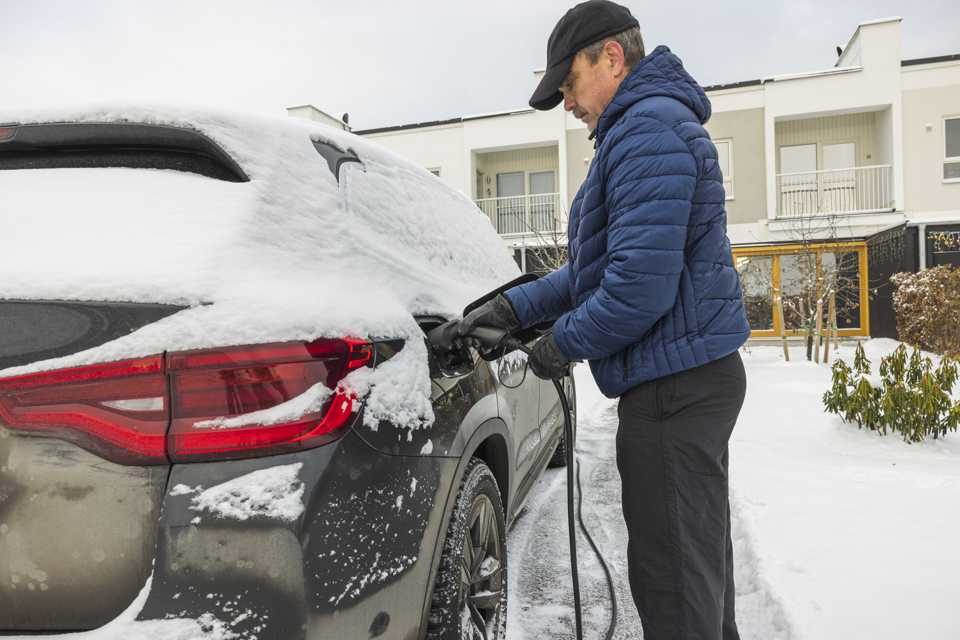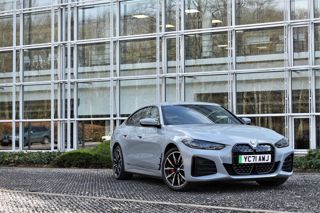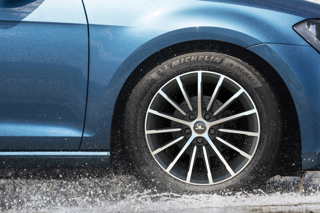Testing of a dozen electric vehicles (EVs) in identical wintry conditions has revealed real-world ranges of up to a third less than official figures suggest.
The cars were driven from fully charged until they stopped. The worst performer – the Funky Cat, launched by Chinese carmaker Ora last year – fell 32.8% short of its official range, covering just 130 miles before stopping, compared with the official figure of 193 miles.
The car that got closest to its official range was the Nissan Ariya; it fell 16% short of its official figure, covering 269 miles rather than the 322 suggested.
The tests, conducted by ‘What Car?’, also showed that the Tesla Model Y came second in terms of getting closest to its official range, recording a shortfall of 17.8% on its official range of 331 miles, but covered the most distance overall, at 272 miles.
Will Nightingale, head of What Car?’s test team, said: “More and more people own or are considering electric cars, and it’s important that they understand the pros and cons of this technology, especially in terms of how far they are likely to go between charges.”
In 2020, the Norwegian Automobile Federation tested 20 BEVs in real-world winter conditions, and found that, on average, the range dropped by around 20%: a scenario which will be all too familiar to fleet operators across the UK.
The winter weather also slows down the speed at which a BEV can be charged and, although fleets can take actions to reduce the negative effect of the cooler conditions, such slowing cannot be eliminated.
Last year, both Centrica and Royal Mail reported seeing up to a 40% drop in range for their BEVs in cold conditions.
“We introduced our first 100 EVs throughout 2018/19, so we’ve had them for a couple of winters now,” says Anna Pearson, fleet innovation and environment manager at Royal Mail.
“The colder and darker conditions mean we have to use the heaters and lights more, and we have seen a drop in range.
“We’ve probably seen a drop of about 25% to 30%. That, obviously, depends on how the vehicle is being driven as well.”
READ MORE ABOUT HOW THE COLD AFFECTS EVS AND WHAT TO DO ABOUT IT
In the What Car? test, all cars were driven at the same time at a test venue chosen to remove any variables that might hinder comparing results.
The 15-mile route simulated real-world driving conditions, taking in 2.6 miles of stop-start urban driving, four miles at a steady 50mph and eight miles at a constant 70mph.
Prior to testing, the tyre pressures were set to the manufacturer recommendation, before the cars were fully charged and left outside overnight for roughly 14 hours in temperatures that ranged from 0 to 2 degrees centigrade.
The cars were then plugged in again to ensure the batteries were full, ‘eco’ (or the closest equivalent) driving mode was selected, and all 12 were driven in convoy, swapping running order regularly to ensure no benefits were conferred by road position, until they ran out of charge.
All cars ran their heating systems to provide an interior temperature independently verified at 19.5 degrees.
Real Range test – real-world winter range vs official range
| Car | Official range (miles) | Winter test range (miles) | Shortfall |
| Nissan Ariya 87kWh Evolve | 322 | 269 | 16.4% |
| Tesla Model Y Long Range | 331 | 272 | 17.8% |
| Mini Electric Resolute | 141 | 113 | 20.2% |
| Genesis GV60 Premium | 321 | 251 | 21.8% |
| BMW i4 eDrive40 M Sport (Pro Pack) | 340 | 261 | 23.4% |
| Jaguar I-Pace EV400 | 261 | 197 | 24.6% |
| Volkswagen ID Buzz Style | 255 | 192 | 24.8% |
| MG 4 Long Range Trophy | 270 | 196 | 27.6% |
| Cupra Born 58kWh V3 | 255 | 182 | 28.7% |
| Renault Megane E-Tech Techno | 270 | 189 | 29.9% |
| Renault Megane E-Tech Equilibre | 275 | 187 | 32.1% |
| Ora Funky Cat First Edition | 193 | 130 | 32.8% |
What Car? previously analysed three of the cars on the same test route and to the same criteria at the height of summer (in July).
These were the Cupra Born, BMW i4 and Tesla Model 3. The only notable difference in car specification was the BMW running on 20-inch wheels in What Car?’s winter test rather than 19-inch units in the summer test.
In the winter test, the average range achieved by the trio was 18% lower than in summer, with the BMW faring worst (261 miles vs 317, a fall of 21.6%) and the Tesla doing best (272 miles vs 304, a fall of 11.8%).
The Cupra covered 182 miles, against 219 in summer, a fall of 20.6%.
Real Range test – winter vs summer
| Car | Winter range (miles) | Summer range (miles) | Shortfall |
|
Tesla Model Y Long Range |
272 | 304 | 11.8% |
| Cupra Born 58kWh V3 | 182 | 219 | 20.6% |
| BMW i4 eDrive40 M-Sport Pro Pack | 261 | 317 | 21.6% |
“The car makers are obliged to quote the official range figures, because they are set to a criteria laid out by European legislators,” said Nightingale. “However, we believe that our testing is far more indicative of what a typical British driver is likely to achieve, and therefore gives car buyers a better understanding before they make the switch to electric.
“Despite falling short of their official figures, it’s still clear that many of these electric cars have the advantage of being cheaper to run than petrol or diesel equivalents assuming you can charge at home – even with the price of electricity so high at the moment.
“The most efficient, the Mini Electric, cost just 8.7p per mile to fuel. The most efficient petrol car we’ve ever tested, a Toyota Yaris, costs 11.2p a mile at today’s prices.”
READ MORE ABOUT HOW THE COLD AFFECTS EVS AND WHAT TO DO ABOUT IT
























Login to comment
Comments
No comments have been made yet.